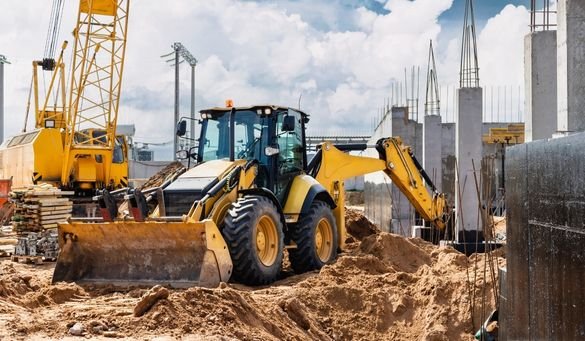Maximize Your Spending Plan by Comprehending the Costs Linked With Building Equipment Services
Understanding the complete extent of prices connected with building devices leasings is critical for optimizing your budget. While the first rental fee might seem straightforward, countless added expenditures-- such as transport, gas surcharges, and maintenance-- can promptly collect, affecting your economic preparation. Moreover, understanding different charges and the ins and outs of rental arrangements can help stay clear of unanticipated economic concerns. What methods can be employed to successfully manage these prices and guarantee a more effective rental experience?
Review of Rental Costs
When thinking about building and construction equipment leasings, comprehending the associated expenses is paramount for efficient budgeting and job preparation. Rental expenses can vary significantly based upon a number of aspects, including equipment kind, period of rental, and area. The initial rental fee often reflects the tools's market need and its connected operational abilities, influencing the general expense.
Along with the base rental rate, supplementary expenses might arise, such as transport costs, gas additional charges, and upkeep costs. It is important to represent these additional expenses to accurately examine the total expense of renting out tools. Moreover, the rental period can affect rates; longer services might get discounted prices, while short-term rentals may incur higher everyday charges.

Failure of Rental Prices
A detailed understanding of rental rates is important for professionals and job supervisors intending to enhance their budget plans. Rental prices for building and construction tools generally contain a number of components, consisting of base prices, time-based charges, and usage costs.
Base rates are the core charges connected with the leasing of the equipment, often established by the type and size of the equipment. These rates can differ substantially, influenced by variables such as devices demand, schedule, and regional market trends. Time-based fees, which may be daily, weekly, or monthly, offer to fit various job timelines and rental durations.
In addition, rental rates might include use charges, which are applicable when tools is utilized past a specified limit, guaranteeing that the rental firm can account for damage. Seasonal demand variations can also influence rental rates, with peak building seasons normally commanding higher rates.
Furthermore, recognizing the rental company's policies pertaining to maintenance and insurance policy can offer more insight right into the total cost framework. By assessing these components, service providers can make informed decisions, making certain the selection of rental devices lines up with both task requirements and budget plan restraints.
Extra Charges to Take Into Consideration
Recognizing the details of added costs is crucial for contractors to manage their overall rental expenses effectively. Beyond the conventional rental prices, different auxiliary charges can substantially influence the complete price of tools leasing. These fees often consist of distribution and pick-up fees, which can vary based on range and logistics associated with moving the devices to and from the task site.
Moreover, some rental firms might impose fuel additional charges if the devices is returned with less gas than when rented out. It is likewise important to know potential cleansing charges, particularly for customized devices that needs comprehensive upkeep after usage.

Thoroughly examining the rental contract and making clear these extra fees in advance can help service providers prevent unexpected expenses and ensure that spending plans remain undamaged throughout the project next lifecycle.
Repair And Maintenance Costs
Normal maintenance and fixing expenses are commonly neglected aspects that can considerably affect the overall expense of building and construction equipment leasings. When renting out equipment, it is important to take into consideration not only the rental charges but additionally the prospective expenses related to keeping the machinery in ideal operating problem.
Many rental companies consist of basic maintenance as part of the rental arrangement; nonetheless, more substantial fixings or unexpected break downs can result in extra costs. It's vital to review the rental contract carefully to comprehend what maintenance services are covered and what obligations drop on the tenant.
Moreover, devices that is not properly maintained can bring about inadequacies on the work website, possibly boosting and triggering delays job expenses. To reduce these risks, it is recommended to conduct regular inspections and keep open interaction with the rental copyright pertaining to any kind of problems that occur during usage.
Insurance Policy and Responsibility Expenses
Insurance and liability prices are essential parts that can dramatically affect the overall expense of building and construction tools leasings (equipment rental company). These prices make sure that both the rental business and the customer are secured from potential economic losses emerging from mishaps, damage, or burglary during the rental duration

Additionally, customers should be conscious of any kind of deductibles or exclusions in the insurance coverage, as these can impact possible out-of-pocket expenses. Comprehending the conditions of any insurance protection is vital to avoid unforeseen prices. Ultimately, budgeting for insurance coverage and responsibility expenditures can help make sure a smoother rental experience and shield against financial dangers land planer for skid steer related to building and construction projects.
Conclusion
In conclusion, a thorough understanding of the expenses linked with building and construction tools rentals is important for effective spending plan administration. Eventually, informed decision-making pertaining to devices rentals adds to the general success of construction undertakings.
Rental prices can vary significantly based on numerous elements, including devices type, period of rental, and area (aerial lift rental). The rental duration can impact prices; longer rentals might qualify for reduced prices, while short-term services may sustain higher day-to-day charges
By performing extensive study and engaging with reliable rental business, contractors can successfully navigate the complexities of rental rates, ultimately optimizing their economic resources.
Past the standard rental rates, numerous supplementary fees can significantly affect the complete cost of devices leasing. Rental firms frequently supply liability insurance coverage that covers injuries to 3rd events or damage to building, while equipment damage insurance coverage can cover the more tips here price of repairs or replacement if the leased tools is damaged.